World Masterpiece Theater

I dedicate this page for those anime that I've watched that i think lots of people now have forgotten it. Maybe this could bring back those memories! n_n'
Where it started...
World Masterpiece Theater was a Japanese TV Anime staple that showcased each year an animated version of a different classical book or story, which originally aired from 1975 to 1997 then resumed on 2007. It was produced by Nippon Animation, with it airing primarily on Fuji Television. Hayao Miyazaki and Isao Takahata both worked on several of the series. The World Masterpiece Theater lasted for 23 seasons, from A Dog of Flanders in 1975 to Remi, Nobody's Girl in 1997. It was restarted again in 2007 by Nippon Animation with the release of Les Miserables: Shojo Cosette. Then, Porufi no Nagai Tabi (The Long Journey of Porphy) will be expected to air in BS Fuji on January 6, 2008, thus making it the 25th World Masterpiece Theater series.
Only a few series were ever dubbed in English for the American market, including Tom Sawyer (1980), Swiss Family Robinson (1981), and Little Women (1987). The anime satellite television network, Animax, who also later aired numerous installments of the series across Japan, also later translated and dubbed numerous of the series' installments into English for broadcast across its English-language networks in Southeast Asia and South Asia, such as Princess Sarah (Shōkōjo Sēra), Remi, Nobody's Girl (Ie Naki Ko Remi), Litlle Women (Ai no Wakakusa Monogatari), and others. The serials also found success in Europe, with Anne of Green Gables (1979, Miyazaki's last work for Nippon Animation before leaving the studio), Heidi, Girl of the Alps and Princess Sarah.
Before Nippon Animation - Calpis Theater (1969-1974)
Dororo and Hyakkimaru (Dororo to Hyakimaru 1969)
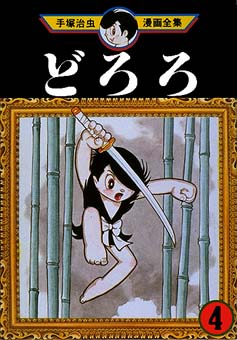
The story takes place in Japan during the Sengoku period, or the Warring States period. Forty-eight major demons, known as majins (lit. demon gods), sense the impending birth of a powerful human, who will grow up to be the vanquisher of demonkind.
The forty-eight majins make a deal with the samurai Kagemitsu Daigo--who is the father of the yet-unborn child--wherein Daigo pledges forty-eight body parts of his unborn son to the majins, receiving in return the majins' guarantee that Kagemitsu will be unbeatable in any warfare and become the lord protector of the entire Japan. Indeed, the boy is born without forty-eight body parts; Kagemitsu puts the neonate in a basket and floats him down a river.
Fortunately the infant is rescued by a physician named Jukai who, over the period of many years, devises many cunning prosthetics so that the boy--named Hyakkimaru (lit. One Hundred Ogre Boy) by Jukai--can function like a normal person. Also Hyakkimaru has many supernatural powers which allow him to see, talk, and hear, despite having no eyes, mouth, or ears.
Upon reaching adulthood, Hyakkimaru embarks on a journey to vanquish the forty-eight majins and reclaim his body parts; he is soon joined by Dororo, a precocious street urchin and self-styled "greatest thief in all of Japan." Together, Hyakkimaru and Dororo travels the feudal Japan, helping the oppressed people and defeating the demons, in the hope that one day Hyakkimaru will win back all his body parts from the forty-eight majins.
Moomin (Mumin 1969 - 1970)
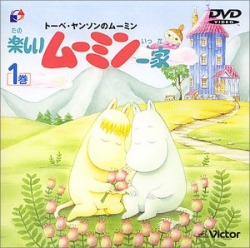
This series is the 1969 version of Moomin. It is only called, "Moomin" in Japan, and is called the first half as "Tokyo Movie version" and the latter half as "Mushi pro version".
Tokyo Movie that undertook the production of this at first drew the eye of Moomin greatly according to liking of a Japanese children, and drew him lovely. The character of Moomin also differs from an original. He was a naughty ordinary boy who occasionally did fight or was a little sly. Moreover, since the car etc. appeared in everyday life ordinarily, Tove Jansson, the original author, got angry, saying "my Moomin is No car, No fight, and No money" (At that time, Hayao Miyazaki who had participated in this work as an animator opposed it, and made the tank appear in the work). Although the reputation as animation for the boys in whom elements of an adventure and a comedy, etc. were incorporated was very high, it was too different from the original too much. In addition, there was not a name with the original, and the heroine called only a young lady of Snork" was named non-non". In addition, the heroine who didn’t have any name in the original and was called only "The Snork Maiden") was named "Non-non". It was the name which the first director took from a wife's pet name. However, she was renamed ", Fraulen" which parodied the word "Fraulein" to mean "young lady" in later "Delightful Moomin Family" because the author disliked her name being audible as "non, non (no, no)". As a result, Tokyo Movie had the contract canceled, and the character design had been changed by her complaint.
Mushi pro version which took over this work had a lot of literary episode in which a mysterious story, a scary story, an absurd story, a myth story or a tragedy, etc. were included.
Still, her consent is not obtained, and the program has ended.
(i only got the summary..T_T)
Andersen Stories or Hans Christian Andersen Stories (Anderusen Monogatari 1971)
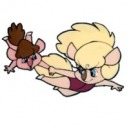
Hans Christian Andersen Stories (Anderusen Monogatari) is a Japanese anime series by Mushi Productions and aired on Fuji TV from January 3 to December 21, 1971.
(theirs no summary for this anime..T_T..gomen!!)
New Moomin (Shin Mumin 1972)
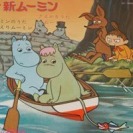
New Moomin (Shin Mumin, English: Moomin) is an anime series first aired in 1973. It was broadcast on the Fuji Television Network as the previous work. The production is Mushi production, and all the 52 episode. The producer is Masami Iwasaki. It was created as a sequel to the earlier television series "Muumin" from the 1960s.
Usually, it is merely called " Moomin" in Japan. However, in order to distinguish from 1969 version, it is also often called "Shin Moomin ( = New Moomin)".
This 1973 version is a sequel of the previous work canceled by the author's claim.
Jansson compromised to the request of the Japanese children who wants to see Moomin (Tokyo Movie version). And the sequel was made from the conditions of "not broadcasting except Japan".
In this way, Moomin which was brought close to the atmosphere of Tokyo movie version and was drawn like a more Japanese anime in the design was produced by Mushi Production (not Tokyo Movie Shinsha) again. Compared with former Moomin which was fairylike, this seemed to be a living thing.
Fables of the Green Forest or Rocky Chuck the Mountain rat (Yama Nezumi Rokkī Chakku 1973)

Fables of the Green Forest (Yama Nezumi Rokkī Chakku; lit., "Rocky Chuck, the Mountain Rat") is an anime adaption based on a series of books published in the 1910s and 1920s by Thornton W. Burgess which ran on the Japanese network Fuji TV. It consists of 52 episodes and was created by the animation studio Zuiyo Eizo (the predecessor to Nippon Animation).
The series has been aired in many countries outside Japan.
Heidi, Girl of the Alps (Arupusu no Shojo Haiji 1974)

Heidi, Girl of the Alps (Arupusu no Shōjo Haiji) was a very popular anime series released by the animation studio Zuiyo Eizo (which later became Nippon Animation) in 1974. It was directed by Isao Takahata and features Yoichi Kotabe (character design and animation director), hayao Miyazaki (scene design and layout). The series is based on the Heidi children's book, which Swiss author Johanna Spyri wrote in 1880.
Heidi is one of several World Masterpiece Theater titles produced around the "classical children's literature period" (1974-1997), based on classic tales from around the world.
The Heidi anime was an extremely popular TV series in many countries all over the world. The series is less well-known in the English language; the only version of the anime to have been released in English the United States is a redub of the feature-length 1979 movie version of the TV series which appeared on VHS in the United States in 1985. Another English dub is known to have existed when the series was shown in the Philippines in the late 70s; otherwise, no English dub of the series proper was made until 2001. However, none of the episodes have currently been released on home video.
Cast
Heidi
Alm-Ohi
Peter
Clara Sesemann
Dete
Mrs. Rottenmeier
Bernard (grandfather's lazy St. Bernard)
Blinky the Bluebird
The Nippon Animation's World Masterpiece Theater
A Dog of Flanders (Furandasu no Inu 1975)
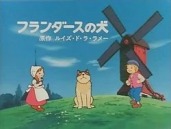
Flanders no Inu (Furandasu no Inu, "A Dog of Flanders") is a Japanese anime series by Nippon Animation. It is based on the 1872 novel "A Dog of Flanders" by Maria Louise de la Ramee, which is very popular in Japan.
In preparation of the anime, extensive studies have been made of original Flemisch 19th century city and town buildings. The authentic rural buildings of the Open-Air Museum Bokrijk have served as models for the interiors and exteriors depicted in the anime (f.e. the house of 'grandfather' Johan Daas).
A remake named "Flanders no Inu, Boku no Patrasche", was produced in 1992 by Tokyo Movie Shinsha.
Flanders no Inu, Boku no Patrasche (remake)

The series is a remake of "Flanders no Inu", the original World Masterpiece Theater series which was produced in 1975 by Nippon Animation.
